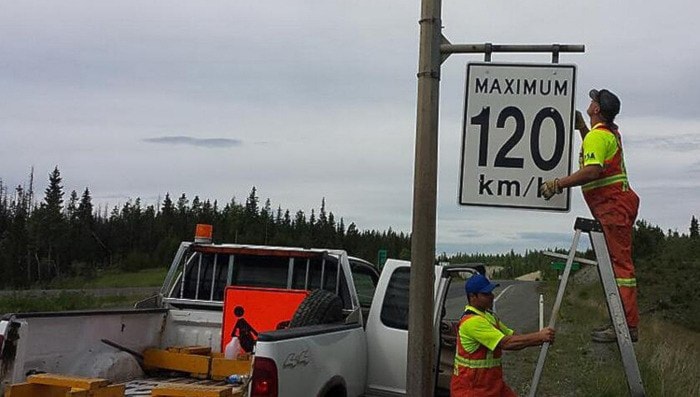Results are mixed from the first year after the B.C. government raised speed limits on 33 sections of rural highway, with average traffic speed and serious collisions up in seven sections.
Transportation Minister Todd Stone released of the first year of operation Tuesday, saying more data are needed to understand the changes in traffic behaviour and accidents. Increased speed limits will continue in most areas, including on the Coquihalla, Okanagan Connector and between Parksville and Campbell River where B.C.'s first 120 km/h speed limits are in place.
Stone cited the Coquihalla as an example of different factors at play. Between Hope and Kamloops, where the limit went from 110 km/h to 120 in November 2014, the crash rate remains at the lowest rate in the past 10 years.
Speed limits are being lowered on two sections of highway, where engineers have determined other safety measures such as passing lanes or rumble strips aren't likely to be successful. Those are Highway 1 from Hope to Boston Bar, rolled back from 100 to 90 km/h, and Highway 5A from Aspen Grove to Princeton, being lowered from 90 to 80 km/h.
Increased speed limits remain in place on the Sea to Sky Highway from Horseshoe Bay to Squamish (80 to 90 km/h), and Revelstoke to Golden (90 to 100 km/h).
Raw data from the ministry show spikes in accidents on certain days, such as when there is heavy snow on the Coquihalla or the Fraser Canyon. In some places, like Highway 99 north of Whistler, average traffic speed actually fell after the posted speed limit was increased.
Ministry data show a long-term decline in serious crashes across provincial highways over the past decade, but a nine per cent increase in the 2014-15 year that was studied. That increase shows up whether speed limits were changed or not, and has also been reflected in increasing ICBC rates.
Stone noted that while highway and vehicle safety improvements have declined around North America in recent decades, B.C. has seen the same jump in accidents. Contributing factors include driver inattentiveness and driving too fast for weather conditions.



